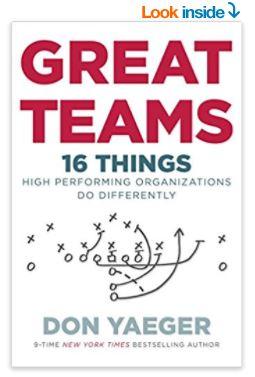With his personal finances spinning out of control, Steve Carell’s character in the U.S. television series The Office gathered everyone around and announced, “I declare bankruptcy!” His co-workers then explained that using bankruptcy as a path to deal with financial difficulties involved more than a simple announcement.
Changing board performance culture is also much more complex than simply announcing to board members, “I declare a new culture!” A successful transformation takes time and a focused process. Here are five steps to make your board revitalization happen.
1. Identify the Need and the Course of Action
To implement a culture change, establish a clear understanding of why a shift is necessary. Is there a performance expectation not being met? Or is a new level of individual engagement needed?
Explanation of the precise action required is essential. Merely stating, “You must do more” or “You must work harder” won’t provide a defined direction or lead to much enthusiasm for change.
Communicating a clear vision of the anticipated positive outcomes is critical, as is defining the consequences of not moving in a new direction.
2. Acknowledge That Change Isn’t Easy
Don’t be surprised to encounter resistance when announcing a new course of action.
To illustrate resistance to change, I enjoy telling the story of a rare cold day in Florida. My wife told our then six-year-old son that he would need to wear long pants to school the next day instead of a T-shirt and shorts.
His reaction was emphatic. “No, I can’t wear long pants!” He literally cried all night and the next morning on our drive to school.
When we reached the school entrance, the look of shock on his tear-stained face was priceless. All the other children were wearing hats, gloves, coats and, of course, long pants.
“Dad, how did she know?” he asked. “How did mom know about the pants?”
“She’s a mom, and moms know everything.”
Why is there such resistance to change? Because egos and emotions are involved. Change triggers fear of the unknown. Even though the benefits of an innovative solution may appear to be obvious, acceptance and buy-in from stakeholders is often not automatic.
Getting board members to support a deviation from the comfort of long-standing practices can be difficult. Recognize the personalities involved and devote the time necessary to gain their support rather than springing surprise announcements on them. Failure to do so could easily result in a negative reaction that ends your culture-enhancing initiative.
3. Overcome Opposition
Help overcome opposition from those who are uncertain about your proposed deviation by applying steps recommended by change experts.
According to brothers Chip and Dan Heath, authors of Switch: How to Change When Change Is Hard, many people avoid taking action or supporting proposed change because the challenge appears to be insurmountable; the path to addressing it overwhelms them.
The remedy, the Heath brothers suggest, is to take an incremental approach. Small steps are more easily accepted as doable, which helps build supportive buy-in.
Julie Henry, an expert on change and a speaker colleague of mine, has practical advice that will help nonprofits successfully execute needed change: “Change is always challenging for people, especially when it is not their idea in the first place. To successfully influence change (and make it stick), you must break it down into action steps that people can easily understand and implement.”
Henry has a three-step formula for successfully getting others to accept a new course of action.
-
Make It Easy—Break down the change you are suggesting into steps that can be easily followed. If barriers develop or people don’t understand what to do next, they will stop changing altogether. And remember, the best judges of whether or not your step-by-step action steps are easy to follow is them, not you.
-
Make It Rewarding—People change because they see what’s in it for them. They understand that if they invest their time, talent and treasure, they will be better off.
-
Make It Normal—People must see others like themselves already exhibiting the change you’re advocating. This is the secret to influencing lasting change. If people feel like they will fit in if they make this change, they will support the change.
When the time for change arrives, it doesn’t have to be chaotic. With a strategy that is incremental, valuable and accepted, change can be a collaborative process with positive results.
4. Reinforce Awareness of What They’re Playing For
No doubt nonprofit board members feel their service is important. But participating in board meetings, raising money and attending events doesn’t automatically translate into truly feeling the mission.
 In Great Teams, author Don Yaeger shares the story of how the once underperforming USA Basketball team returned to its pre-eminent position. According to Don, Coach Mike Krzyzewski knew talent wasn’t an issue when he was tapped to take over the team.
In Great Teams, author Don Yaeger shares the story of how the once underperforming USA Basketball team returned to its pre-eminent position. According to Don, Coach Mike Krzyzewski knew talent wasn’t an issue when he was tapped to take over the team.
He believed that the real problem was that the players had lost their focus on the importance of what they were doing. As a result, they stopped giving the effort necessary for playing like world champions. Coach K’s course of action was to create “feel-it moments.” He explained, “You can try to tell people why what they do matters. You can try to show them. But people get what it means when they can feel it.”
His “feel-it moments” emphasized patriotism and placing service above self. They included interaction with troops on U.S. military bases and an especially poignant visit to Arlington National Cemetery. The players responded with new energy and determination. Their performance level reflected a renewed spirit of pride in representing their country.
To build support for a higher level of performance, what “feel-it moments” can you create for board members that provide them with a better understanding of the significance of their role?
Strengthening the connection between mission and your board members will build their enthusiasm for elevating their performance commitment.
5. Create a Performance Environment
To achieve and maintain a culture of performance, create an environment that nurtures the behavior your organization is seeking.
-
Identify obstacles that may block your path to success and take action to eliminate them.
-
Establish a method of measurement so everyone knows when expectations are being met.
-
Peer pressure is a strong motivating influence. Once buy-in is achieved, encourage your board members to craft their own system of accountability.
-
Instill a sense of pride in your organization’s mission that inspires enthusiasm and performance.
-
Work to develop positive team chemistry by creating and maintaining an atmosphere that helps board members feel united in their efforts to achieve a common goal.
-
Celebrate every success so your board members can enjoy that priceless sense of accomplishment.
Take Action
Recognize that change means altering behavior and that hesitation to embrace it is a common reaction. If it is time for your board to move to a higher level, implement these five action steps to build and sustain a high-performance environment.
Don’t just declare that a change in culture will be happening. Transformation requires following a deliberate path that leads to the achievements you aspire to.
This article was originally published in April 2017 on the BoardSource blog (blog.boardsource.org/blog).
SIDEBAR
Better Results with Volunteers
Hardy Smith will be presenting the following sessions at the 2018 MPI World Education Congress (WEC), June 2-5 in Indianapolis.
“Recruiting, Retaining and Leading Volunteers.” Volunteers can be the secret sauce for successfully executing a large event. However, they often show up, get trained and are gone at a rate that strains productivity and efficient use of resources. Attend this session and get volunteer leadership success tips and solutions to volunteer program challenges.
“Creating Successful MPI Chapter Boards.” A fully engaged board is the critical foundation for ensuring MPI chapter success. This session will provide chapter leaders with the key essentials for developing and maintaining a positive, performance-minded board.
Learn more about and register for WEC at www.mpiweb.org/wec18, and learn more about Hardy Smith at www.hardysmith.com.

